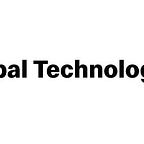Three considerations for building an effective tech resiliency program
Key elements for a building light, agile, and flexible resiliency plans.
by Andrew Sellers, Senior Manager, Technical Product Management
McDonald’s is evolving, and in an ever-changing world, our approach to resiliency in technology must also grow and change. As such, the Global Technology organization is committed to transforming a traditional disaster recovery practice to a future-focused business resiliency program, designed to address resiliency in core technology, accessibility in tooling and monitoring, and building a more resilient and inclusive community.
A traditional disaster recovery practice often involves dense and dusty runbooks, or links to dated file shares. Recovery plans can be hard to follow and quickly become stale as soon as they’re published. They often focus on external threats like fires, power outages, and political unrest. And, the processes and procedures can be highly scoped and process-oriented, leading to inflexibility in a time of crisis.
While accounting for traditional disaster recovery needs is still important, in an environment where core applications rely on modern, highly available cloud technologies that are supported by cross-functional teams, the Global Technology Business Resiliency team needed to re-evaluate the threat landscape.
We decided the best strategy to keep McDonald’s key systems up and running was to turn inward and build a Business Resiliency program with the deliberate focus on continuous internal improvement and the demonstrated capability to recover, using plans that are light, agile, and flexible.
In the end, we boiled it down to three key considerations to develop a program.
1. Easy-to-use observability tools
To keep a deliberate focus on creating light, agile, and flexible recovery plans, the Business Resiliency team uses various Datadog products with near push-button deployment, which have helped transform the program.
We enabled the Universal Service Monitoring capability to help manage the health metrics of services, which allowed for visibility into the dependencies between the key digital capabilities of the McDonald’s Global Mobile App.
2. Accessibility as a key consideration
As important as choosing a tool based on capability, is choosing a tool that is accessible. As teams grow and change, we wanted a suite of tools to work with assistive technology, now and in the future. Inaccessible tools can create barriers within workflows, slowing teams down — and minutes matter in resiliency activities.
Our aim was to find a monitoring and security tool that’s accessible to a wide range of abilities, including color blindness, hearing and vision disabilities, as well as limited strength, mobility, and cognitive functions.
For example, the steepness and direction of line graphs can also be perceived audibly via screen-radar technology. Similarly, finding color alternatives or using color customization can make a multi-line graph easier to read.
The Business Resiliency team takes these accommodations into account, making inclusivity an essential component of resiliency at McDonald’s.
3. Resiliency — it’s for everyone
The Business Resiliency team’s goal is to weave resiliency throughout the larger McDonald’s community, not just within Global Technology.
That’s why earlier this year, the team held the first annual Resiliency Community Day –a half-day conference that brought together over 60 colleagues from across McDonald’s corporate functions to learn about business resiliency and how they can be resiliency advocates in their teams.
Among other things, attendees learned about the new Business Resiliency program, how Global Technology reduced Priority 1 incidents by 75% in 2023, and the top resiliency concerns of C-suite leaders from McDonald’s peer organizations.
As McDonald’s grows, the need for best-in-class resiliency plans and tools will continue to grow, as well. But, if you focus and prioritize your efforts — in our case, on easy-to-use tools, accessibility, building a community — your team can be proactive and work together to build stronger, more inclusive, and more resilient businesses and communities.
